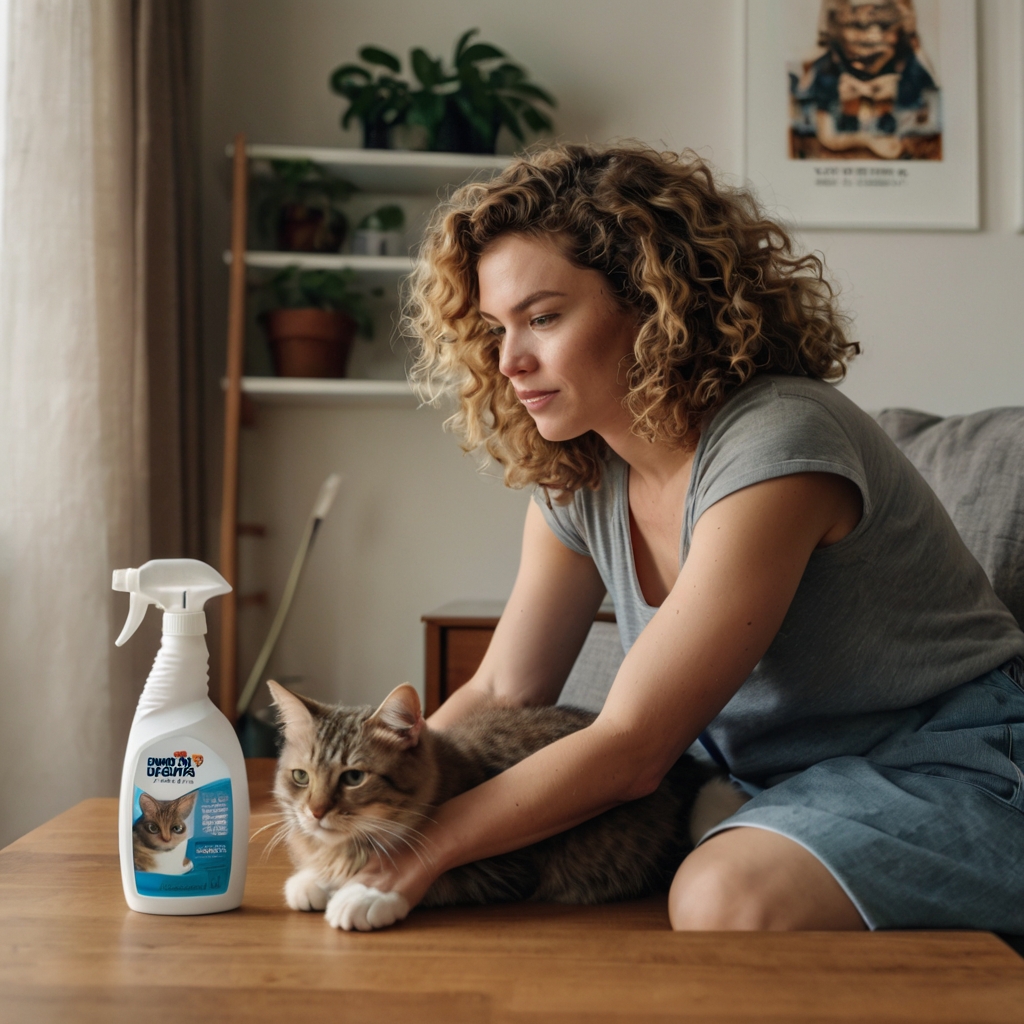How to Stop Territorial Cat Spraying – If you’re a cat owner, finding unexpected puddles of urine around your home is both frustrating and concerning. One of the most common reasons for cats urinating in unwanted areas of the house as a form of territorial marking is a behavioral issue called cat spraying. Understanding why it happens and how to stop it can save your home from lasting odors and keep your feline friend happy and stress-free.
Understanding Territorial Marking in Cats
Territorial marking, also known as cat spraying, is a natural behavior where cats release small amounts of urine on vertical surfaces to communicate with other animals. Unlike regular urination, which usually happens in a litter box, spraying often occurs on walls, doors, furniture, or even curtains.
Why Do Cats Spray?
Here are the main reasons why your cat may start spraying indoors:
- Stress and Anxiety: Changes in your cat’s environment, such as a new pet, moving to a new home, or visitors, can trigger anxiety, leading to spraying behavior.
- Territorial Instincts: Even indoor cats feel the need to mark their territory, especially if they see outdoor cats near windows or doors.
- Medical Issues: Urinary tract infections (UTIs), bladder stones, or other health problems can cause urination outside the litter box. Always rule out medical causes first.
- Unneutered/Unspayed Cats: Cats that aren’t fixed are more prone to spraying due to hormonal triggers.
For more in-depth behavioral causes, check out this trusted guide from ASPCA – Feline Behavior.
How to Stop Territorial Cat Spraying – Top Strategies to Stop Cat Spraying Inside Your Home
Now that we understand the causes, let’s focus on effective strategies to prevent and manage territorial spraying in cats.
1. Use a Cat Spray Deterrent
One of the most effective first steps is applying a cat spray deterrent to the affected areas. These products are designed to discourage your cat from marking the same spot again. Deterrents usually have scents that cats dislike but are safe for indoor use.
Popular commercial options include natural citrus-based sprays or synthetic pheromone blockers. For UK residents, a highly rated product is the cat spray repellent indoor UK version of deterrent sprays, widely available on online pet stores.
2. Try Cat Calming Sprays
If stress is the trigger, a cat calming spray can help. These sprays mimic feline facial pheromones, signaling safety and comfort to your cat. Before buying, it’s wise to read some cat calming spray reviews to select the best-rated options based on real user experiences.
Calming sprays can be applied to door frames, furniture, and common spraying spots. According to reviews on Chewy and Amazon, popular brands include Feliway and Comfort Zone.
3. Clean Marked Areas Thoroughly with Enzymatic Cleaners
Even after cleaning, cats can still smell residual urine, which encourages them to spray the same spot again. That’s where a cat spray enzyme cleaner becomes essential.
Enzyme cleaners break down the organic components in cat urine, removing both stains and odors at the molecular level. Popular enzyme-based cleaners include Nature’s Miracle and Rocco & Roxie Stain & Odor Eliminator.
For a list of vet-approved cleaners, check out this external resource: Preventive Vet – Best Cat Urine Cleaners.
4. Provide Adequate Litter Boxes
Sometimes, a cat sprays because they are dissatisfied with their litter box setup. Follow the golden rule: One litter box per cat plus one extra.
- Keep litter boxes clean.
- Place them in quiet, low-traffic areas.
- Try different types of litter to see which your cat prefers.
5. Block Outdoor Visual Triggers
Indoor cats may start spraying if they feel threatened by outdoor cats roaming nearby.
- Close blinds or install window films.
- Use motion-activated sprinklers to deter stray cats from coming close to your home.
6. Consider Using a Cat Spray Bottle for Training
While positive reinforcement works best for most cats, some owners have success using a cat spray bottle filled with water to gently discourage cats from approaching no-spray zones. This method should be used sparingly to avoid creating fear or anxiety.
7. Consult a Veterinarian
If the problem persists despite these steps, consult your vet. Your cat may need behavioral therapy or, in rare cases, medication to manage anxiety or hormonal imbalances.
For more behavioral resources, visit The Humane Society’s Guide to Cat Behavior Problems.
Final Thoughts: Consistency Is Key
Stopping cat spraying indoors requires a mix of patience, understanding, and consistency. Address both environmental and emotional triggers, clean thoroughly, and use cat spray deterrent, cat calming sprays, and enzyme cleaners when necessary.
By tackling the root causes and following these proven methods, you can help your cat feel secure and keep your home clean and odor-free.
Read More – How to prevent your cat from urinating in prohibited places
shall we read more about cats?


